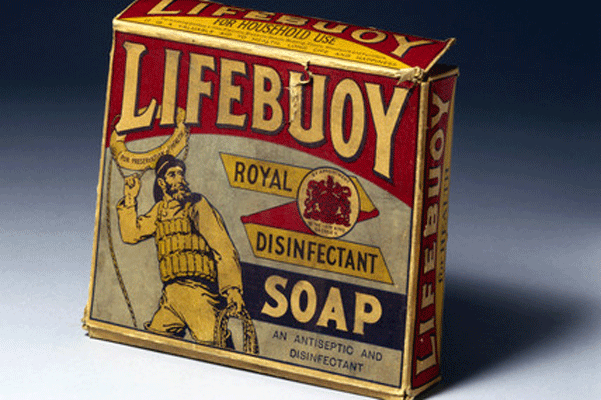
As the brands grow old due to the passage of time, they need a cocktail of ingredients to keep their spirit and brand promise alive. It is every marketer’s vision and that of their organisations to see brands that eclipse generations.
brand savvy with Stha Magida & Tabani Moyo

Immediate examples of such brands include but are not limited to the variety of Unilever’s products such as Lifebuoy, which was launched by the Lever Brothers in 1895 in England. Its sister brand, Gaisha soap, was launched in 1960 in South Africa and it is highly likely that it is going to be a “centurion” in 2060 when the majority of our generation will long be history.
As brands grow old, there is need to maintain the three pillars of a brand that has been well-managed. These three key pillars are brand awareness, brand loyalty and brand identity. These are the strategic catalysts that ensure brands stay true to their promise.
In this article, we analyse the complexities of ensuring that brands are trans-generational in an environment that is littered with skeletons of brands that in certain instances failed to see their second or fifth birthday irrespective of having started on a promising note. A quick example of this is, quite coincidentally, Unilever’s Vaseline in sachets that was launched in Zimbabwe but failed to take off as had been hoped. Luckily, the original Vaseline in the container has stood the test of time.
The most critical ingredients for the brands to grow old and remain young at heart include, but are not limited to, face lifting, reinventing and innovating.
The 121-year-old Lifebuoy brand has grown stronger at the turn of every decade through face-lifting. The brand has occasionally modernised its initial “prototype” through maintaining the brand promise by changing its texture and target markets. The initial target market was the rural and lower ebb of the economic ladder of consumers. The brand emphasised durability and a “deep-clean”. The face-lifted brand targets the young, professional and mobile consumer. At the same time, it has remained true to the traditional and loyal customer base through riding on the brand “humus” — the lasting memories of the brand experience.
On the other hand, an old brand like Geisha is maintaining its competitive gravity through reinvention. It has done so through re-packaging and coming up with modern formulation of rich fragrances. The Geisha of the early 80s through to early 2000 was targeted at low-income earners and communicating to them size and durability. The re-invented brand speaks of the quality of life that people using the product yearn for, which has created strong brand associations of family unity, sharing and caring.
- Chamisa under fire over US$120K donation
- Mavhunga puts DeMbare into Chibuku quarterfinals
- Pension funds bet on Cabora Bassa oilfields
- Councils defy govt fire tender directive
Keep Reading
Trans-generational brands should show no signs of fatigue and reclusion but continuously soul search through rooting itself in the customer’s changing needs. An example of a brand that has maintained young age despite its age, and probably going to be trans-generational is Dairibord’s Sterimilk which came in a container enclosed with foil paper as its lid for decades. Recently the company innovated and came up with a 500ml container with a bottle cap replacing the foil, making it attractive to a wide range of target markets.
Despite the noticeable cases of a run away success stories among brands, it is trite to note that the market has registered disappointing moments as strong brands are reduced to average due to failed attempts in face-lifting, reinventing and innovating.
A quick example to note is the disappointment that has been brought by the poor/hurried re-branding efforts by the local companies. Around the turn of the new millennium, Cairns Foods lived to its creative wizardry when it upgraded Chompkins into a stand-alone brand replacing Willards Potato Chips. This was born out of the success story of the 80s to 90s when the chips had the famous, “ZsaZsa, the starlet, Professor Flurb, Mama Chompkin and Putzi, the dog…” which saw both the kids and adults sing to the brand’s elements, targeting the children market. All this accumulated brand memory and “humus” was lost early this year when the Chompkins were repacked to mimick the Lays chips that are imported from South Africa after the government gazetted the ban of imports. In interactions with colleagues in the market, it shows that a sizable number of people do not relate with the new packaging and this has dented an old brand that was supposed to remain young at heart with the possibility of becoming trans-generational.
Another classical example is that of Lobels’ Lemon Creams biscuits which appeared in the initial dark green package with communicated stability and mature target market. The product was re-packaged and appears like a foreign brand yet it is home-grown.
It should therefore be noted that as brands grow older, strategic marketing become highly important to ensure that attempts towards face-lifting, reinventing and innovation do not “deform” the brands and that the short term sales targets should not inevitably compromise the long term trust of a brand as an asset for the sustainable existence of the company.
In conclusion, one can easily refer to the Olympic brand, which came to birth in 1894 and has remained young and competitive at heart to this age. The brand grows strong each and every passing year. The Olympic Games take place after every four years, which exposes the brand to the global audience, hence the choice of each country for the games contributing towards its face-lift, reinvention and innovation.
Let the brands grow older but remain young at heart — Zimbabwe has the capacity to build trans-generational brands
Stha Magida is contactable on [email protected]. Her co-writer in this article is contactable at [email protected]











